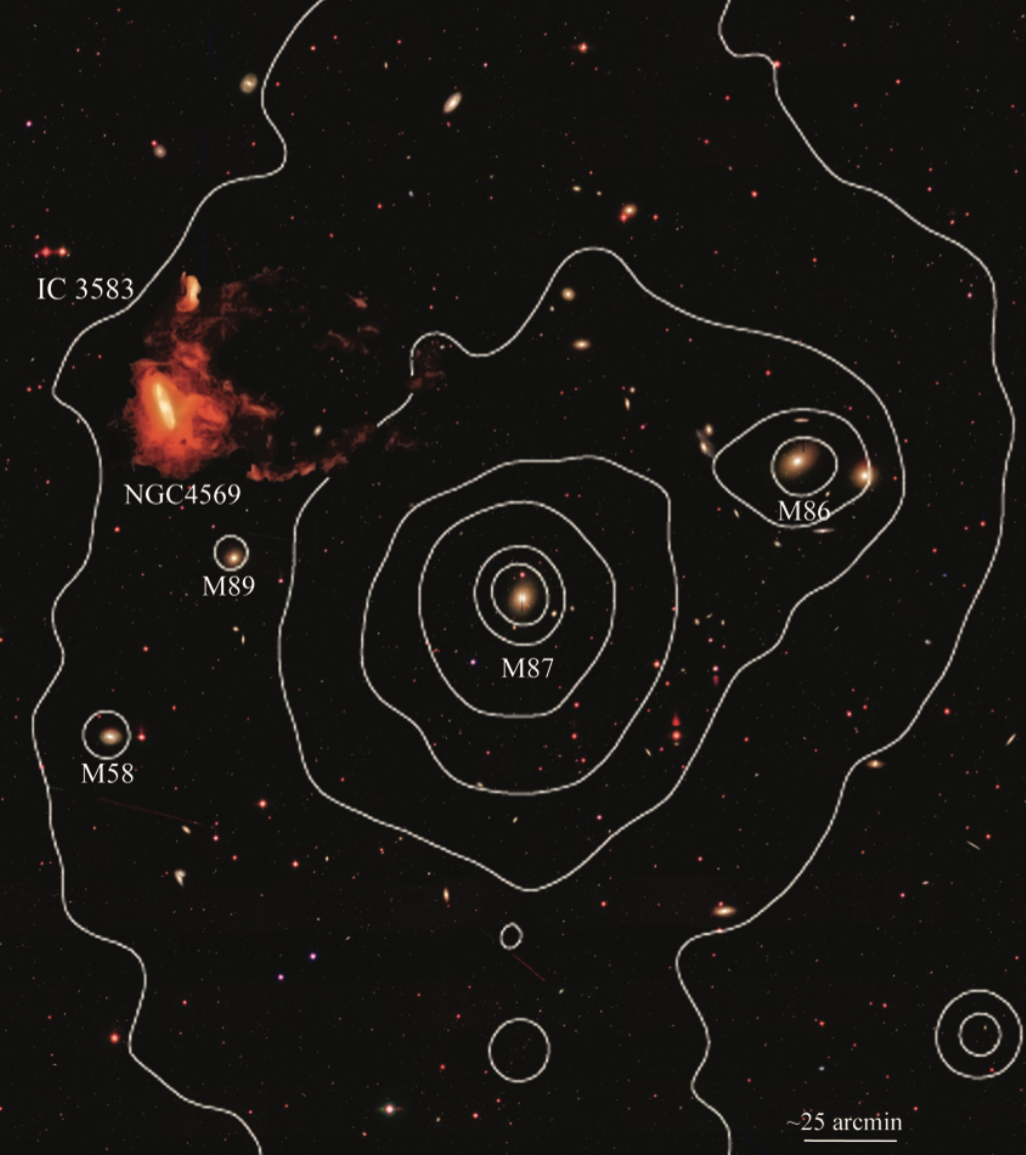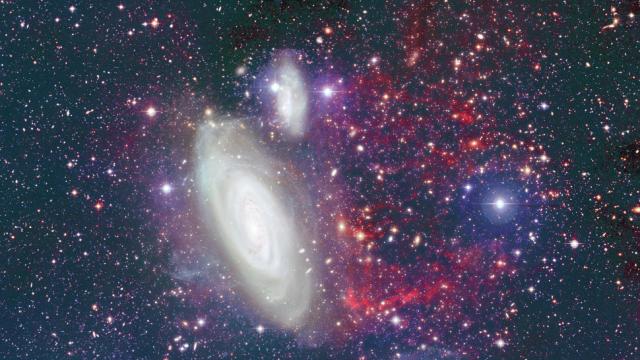Astronomers at the International Centre for Radio Astronomy Research have discovered a galaxy with a rather remarkable feature — a massive plume of gas measuring 300,000 light-years across. That’s five times the length of the galaxy itself.
Located in the Virgo Cluster, galaxy NGC 4569 is located 55 million light-years from our own Milky Way. Scientists have known about this unusual spiral galaxy for many years, but they couldn’t explain why it contains less gas than it’s supposed to. An international team of astronomers led by Alessandro Boselli at the Laboratoire d’Astrophysique de Marseille in France finally have the answer: The galaxy is moving so fast — about 1200km/s — that the ensuing pressure is stripping it of its hydrogen.

“We didn’t have the smoking gun, the clear evidence of direct removal of gas from the galaxy,” noted Boselli in a statement. “Now, with these observations, we’ve seen a huge amount of gas that creates a stream trailing behind the galaxy for the first time. What’s very nice is that if you measure the mass of the stream, it’s the same amount of gas that is missing from the galaxy’s disc.”
Boselli said that big clusters trap a lot of hot gas, but when a galaxy enters a cluster, all the accumulated pressure strips matter away from the galaxy. Astronomers call it a “ram pressure stripping event”. In this case, galaxy NGC 4569 has been stripped of 95 per cent of the gas required to fuel the formation of new stars. So for all intents-and-purposes, this galaxy is dead. The trail of ionized gas is about 80 kiloparsecs across, or 300,000 light-years. That’s five times the length of the galaxy itself.

The researchers were able to make the discovery using a super-sensitive camera called MegaCam on the Canada France Hawaii Telescope. The details of this work can now be found in the journal Astronomy & Astrophysics.
[International Centre for Radio Astronomy Research]
Top image: Galaxy NgC 4569 can be seen in the foreground. The red splotches to its right show the hydrogen gas that’s trailing behind it. Credit: CFHT/Coelum
